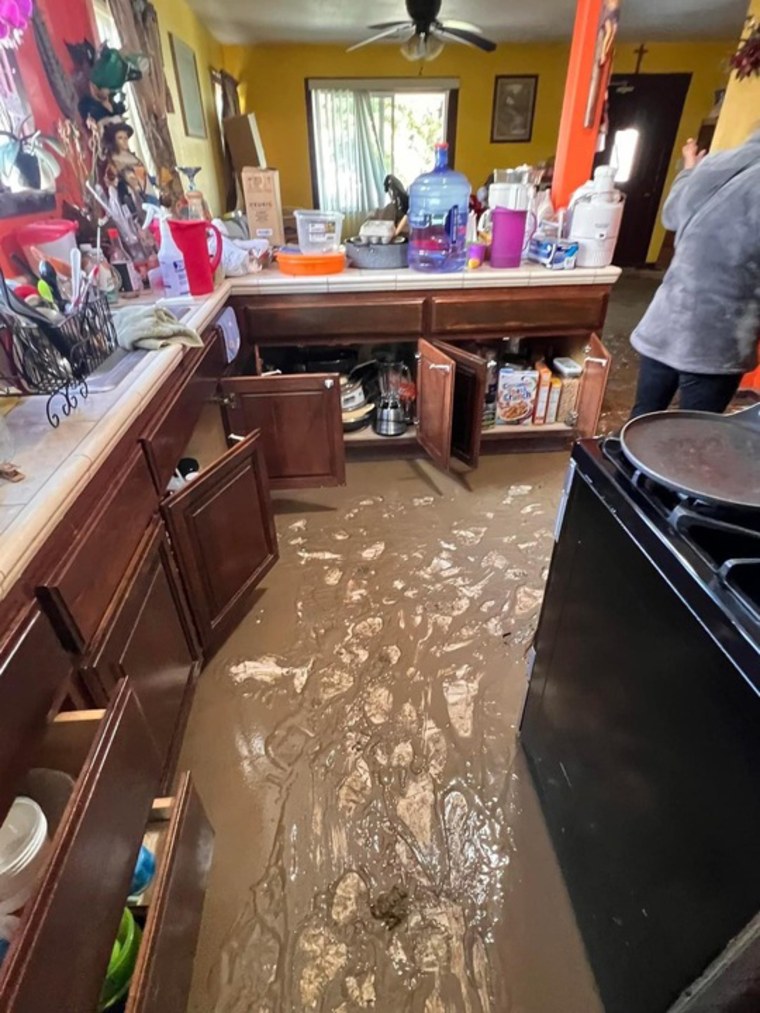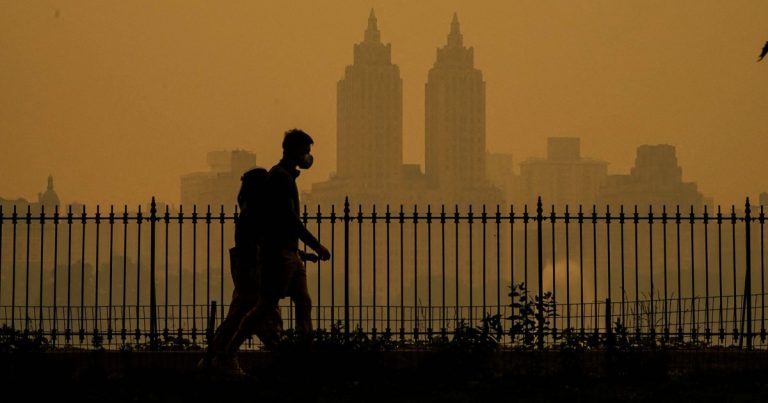Maria Urbieta described how it felt to come back last Thursday and see her house of 24 years, after a levee breach in Pajaro, California, caused by powerful storms that forced a mass evacuation.
“Just to cross the bridge, I started to cry,” Urbieta, 56, said emotionally, referring to the Pajaro River Bridge that connects Pajaro and the neighboring city of Watsonville. “I didn’t know what to expect — how my house looked by the time I got here. As soon as I walked in and opened the door it was really bad.”
Urbieta’s home suffered extensive damage; its crawl space was filled with mud, the living room floor had lifted three inches and all the bedding and furniture were contaminated from the floodwaters. The family’s three vehicles — a Nissan Infiniti QX4, a Jeep CJ7 and a 1987 Chevrolet Camaro IROC-Z — were flooded.
The unincorporated town of Pajaro is home to almost 3,000 people, who are largely low-income, many of them Spanish-speaking Latino farmworkers.
Residents like Urbieta and local officials are frustrated at the damage and losses, as they point out that previous levee breaks should have served as a warning to state and federal authorities. An awaited multimillion-dollar project to mitigate floods, they say, is coming too late.
“Pajaro has not received the attention and the focus and the respect that it deserves,” said Monterey County supervisor Luis Alejo. “Historically, there was not the commitment from the U.S. Army Corps of Engineers (USACE) to fund the flood protection level that is needed to better protect this community from future floods.”
It’s not the first time that Pajaro has faced floods due to levee breaches. It’s suffered four since 1949 — which is when the levee system was originally completed for the Pajaro River — including the 1995 flood that left two dead and caused between $50 to $95 million in damage. A few years later, in 1997 and 1998, major floods also displaced hundreds of residents.
Urbieta and her family spent the last few weeks bouncing around a family member’s place or in shelters, sleeping on inflatable beds, couches and floors. Urbieta, who utilized her home as a daycare, is now out of work and a home for at least the next month, she said.

The USACE and the California Department of Water Resources are funding the Pajaro Management Flood Project, a $400 million effort to mitigate flood risk in Pajaro, Watsonville and the surrounding agricultural areas. Construction is expected to commence in 2025 but it couldn’t come soon enough.
‘That’s not right’
The Pajaro River levee was an issue for decades as federal, state and local officials knew it could fail and needed repairs. A risk management study by the USACE designated the original project “no longer provides the designed level of protection.”
But the surrounding area made up of farmland and homes has been deemed too low value. One unnamed official told The Los Angeles Times, “It’s a low-income area. It’s largely farmworkers that live” there, which has led to low prioritization through the years.
Alfredo Aguirre, a farmworker, was anxious to return to his home. Fortunately, only the outside had been affected by the flood. He had to throw away yard machinery, patio furniture and dog accessories.
Aguirre, 47, felt like the flooding could have been prevented; he noted the river’s vegetation had not been cleaned up over the years, making it more vulnerable.
“Something has to happen, there has to be disasters, loss of lives so they can clean it up. That’s not right,” said Aguirre over the phone, speaking in Spanish. He thinks he’ll be out of work for at least the next month or two since the floods have impacted nearby crops.









